A blooming azalea is such a lovely sight, easy to take care of, and they come in many varieties to suit your taste.
If you want a low-maintenance flowering plant, you may wish to add azaleas to your collection.
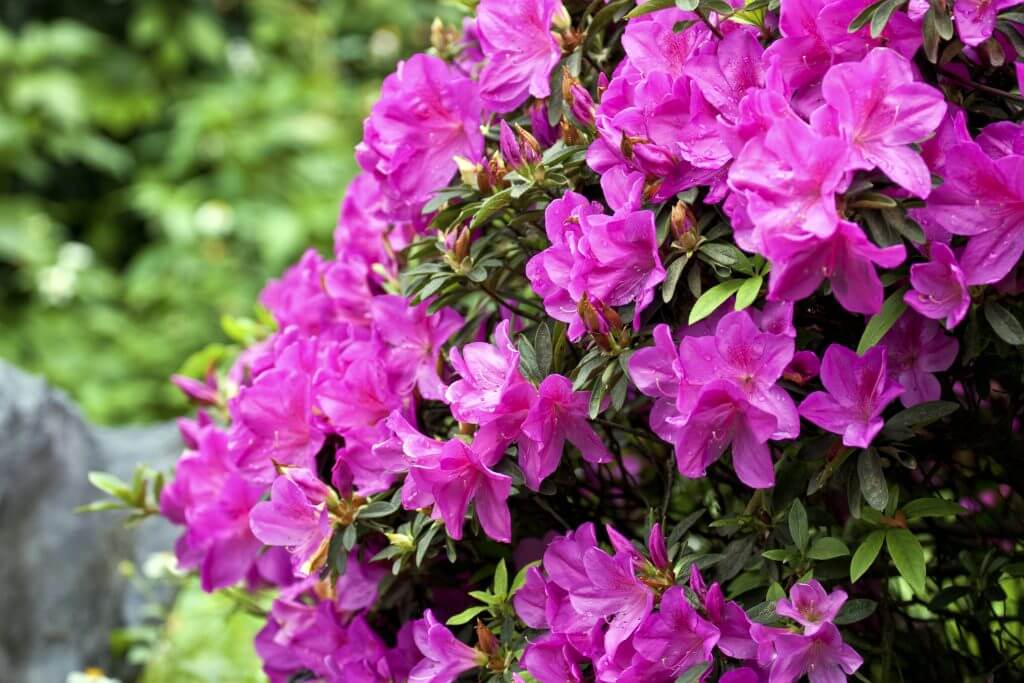
The Basics of Azalea
Azaleas are shrubs under the genus Rhododendron. These flowering beauties are native to the continents of North America, Europe, and Asia.
Azaleas and rhododendrons can be confused with the other because they are of the same genus. However, azaleas are either deciduous or evergreen, while other rhododendrons are all evergreen.
Another way to distinguish azaleas from other rhododendrons is that azaleas have five stamens while rhododendrons have ten.
Rhododendrons also grow larger than azaleas and have bigger blooms and foliage.
Rhododendron schlippenbachii
Also known as the royal azalea.
This azalea is native to Japan, the Korean Peninsula, regions of Manchuria, and the Russian Far East.
It grows at altitudes of 1300 to 4900 feet (400 to 1500 metres).
This dense deciduous shrub can grow to about 15 feet (4.5 metres) tall but generally grow to about 3.3 to 6.6 feet (1 to 2 metres).
Its obovate leaves have glandular hairs and are about 1.8 inches (4.5 cm) long and 1 to 1.75 inches (2.5 to 4.5 cm) broad.
The blooms of the royal azaleas show in spring to early summer. They are white to pink, and its upper three petals usually have red spots.


Rhododendron farrerae
Also known as Mrs Farrer’s rhododendron.
This deciduous azalea is native to China, particularly in Hongkong and Hunan to Fujian, and found at elevations of 2600 to 6800 feet (800 to 2100 metres) in dense mountain forests.
Mrs Farrer’s rhododendron can reach a height of about 2 feet (60 cm) and produces violet flowers.
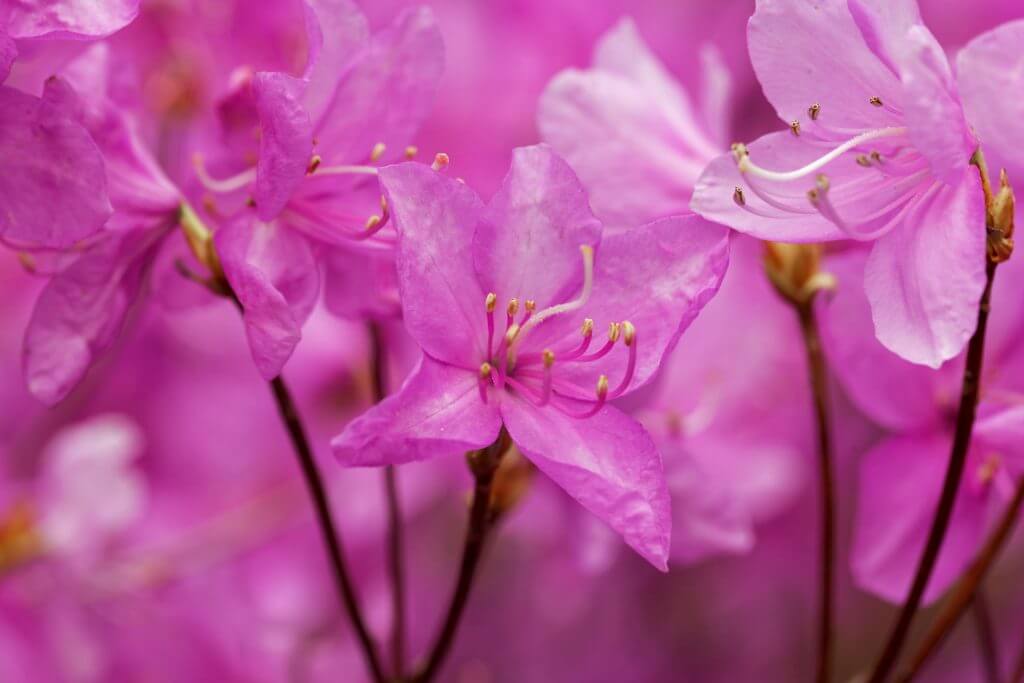

Rhododendron moulmainense
Also known as Westland’s Rhododendron.
This azalea is native to China, Myanmar, Thailand, Malaysia, and Vietnam.
The Westland’s rhododendron is either an evergreen shrub or small tree that can grow from 9.8 to 26 feet (3 to 8 metres) tall.
Its elliptical and leathery leaves are 1.5 to 5 inches (4 to 13 cm) long.
This azalea has fragrant white or pink flowers that grow in an umbel or short flower stalks that grow from a single point, resembling the spine of an umbrella.
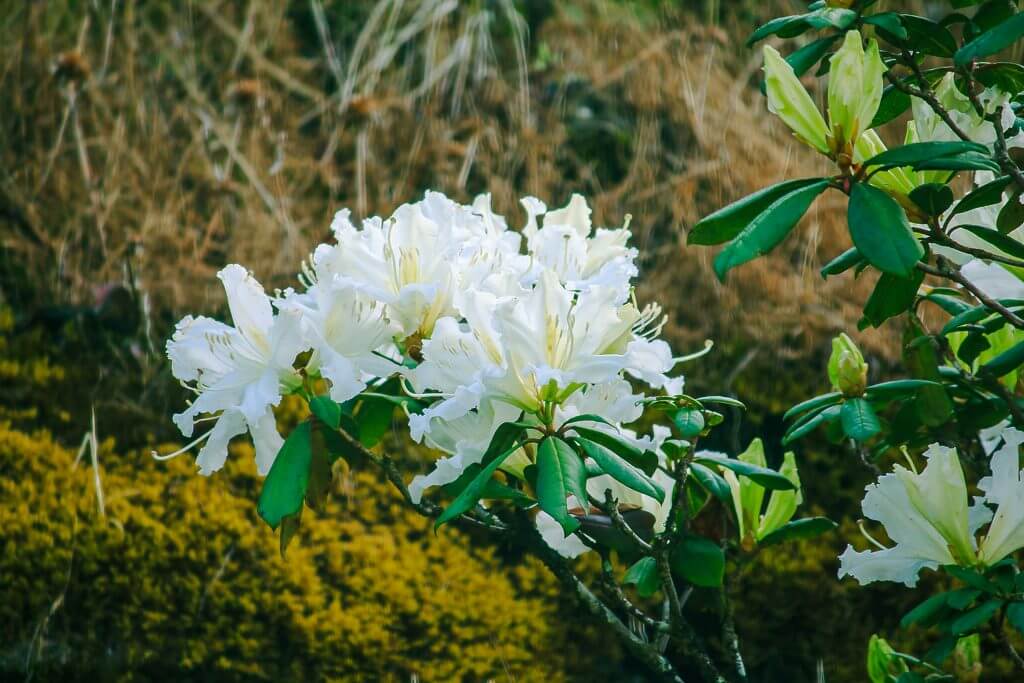

Rhododendron simiarum
Also known as South China Rhododendron.
This azalea mainly grows in Southern China.
The South China Rhododendron is a bushy shrub or small tree that grows to about 3.3 to 6.6 feet (1 to 2 metres), but some can grow to about 10 feet (3 metres) tall.
Its young shoots are covered with tomentose or fine curly grey hairs. It becomes hairless later on, and its bark will be grey with thin and small irregular flakes.
The colours of the flowers of this azalea range from white, to dark pink with red spots.
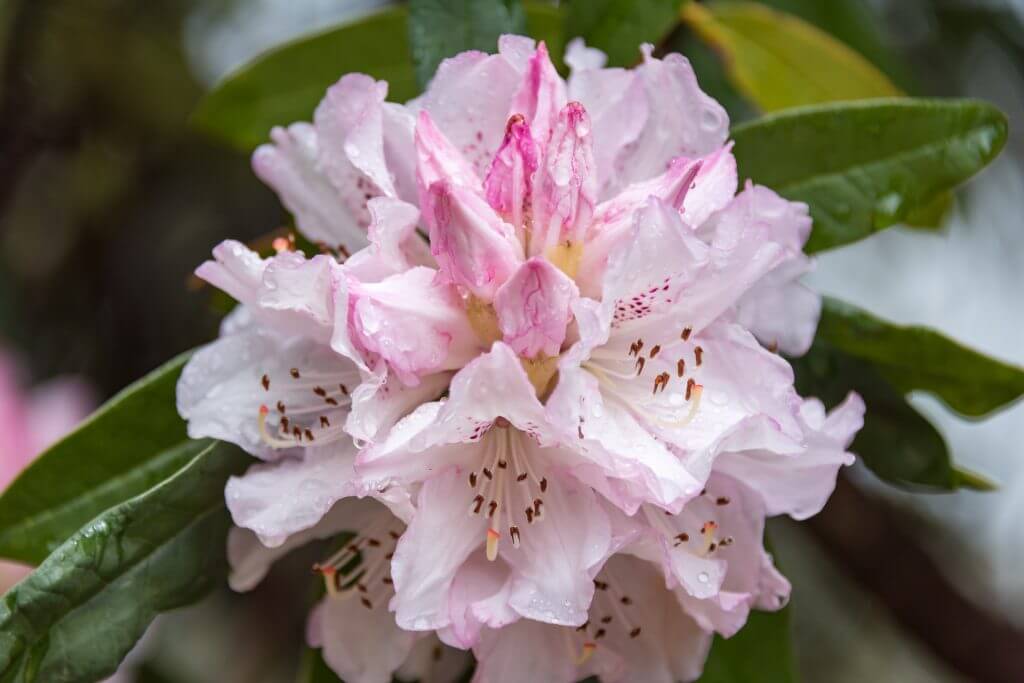

Rhododendron simsii
This azalea is native to East Asia and grows at altitudes of 1600 to 9000 feet (500 to 2700 metres).
This shrub grows to about 78 inches (2 metres) tall.
Its flowers are white to dark red, and the leaves are 0.6 to 2 inches (1.5 to 5 cm) long and 0.2 to 1.1 inches (0.5 to 3 cm) wide.
This azalea is poisonous because of the presence of grayanotoxin, which is a neurotoxin.
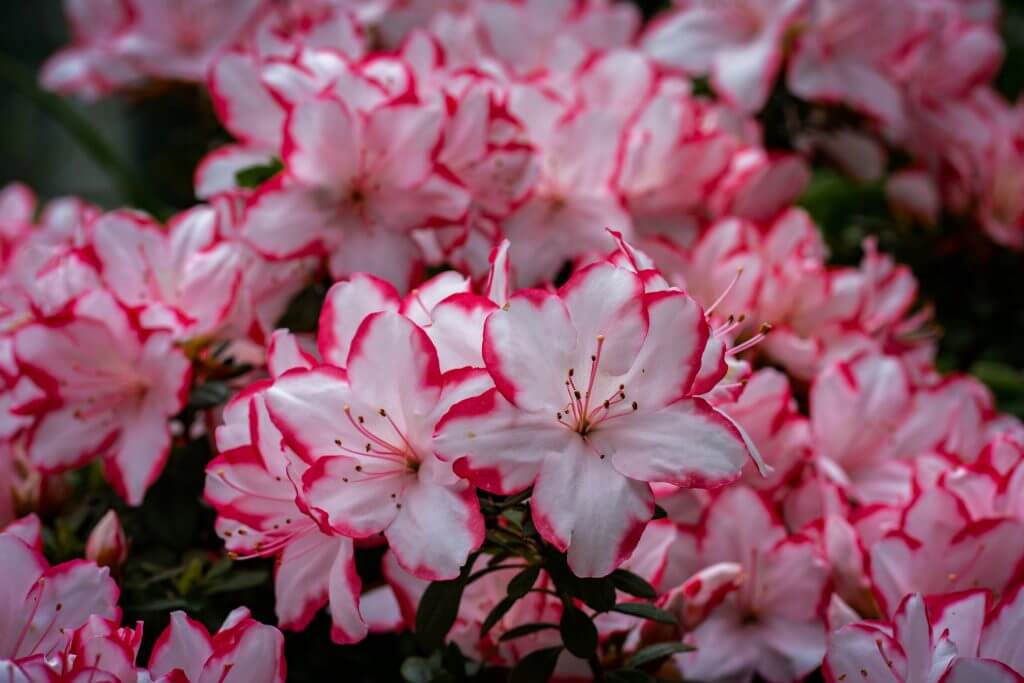

Rhododendron arborescens
Also known as sweet azalea or smooth azalea.
This azalea is native to the United States and grows at an elevation of about 3000 feet (914 metres).
It grows to about 8 to 10 feet (2.4 to 3 metres tall).
The sweet azalea produces white to pink flowers with red stamens. Its glossy green leaves turn deep red to purple in autumn.
This plant is also poisonous and contains grayanotoxin.
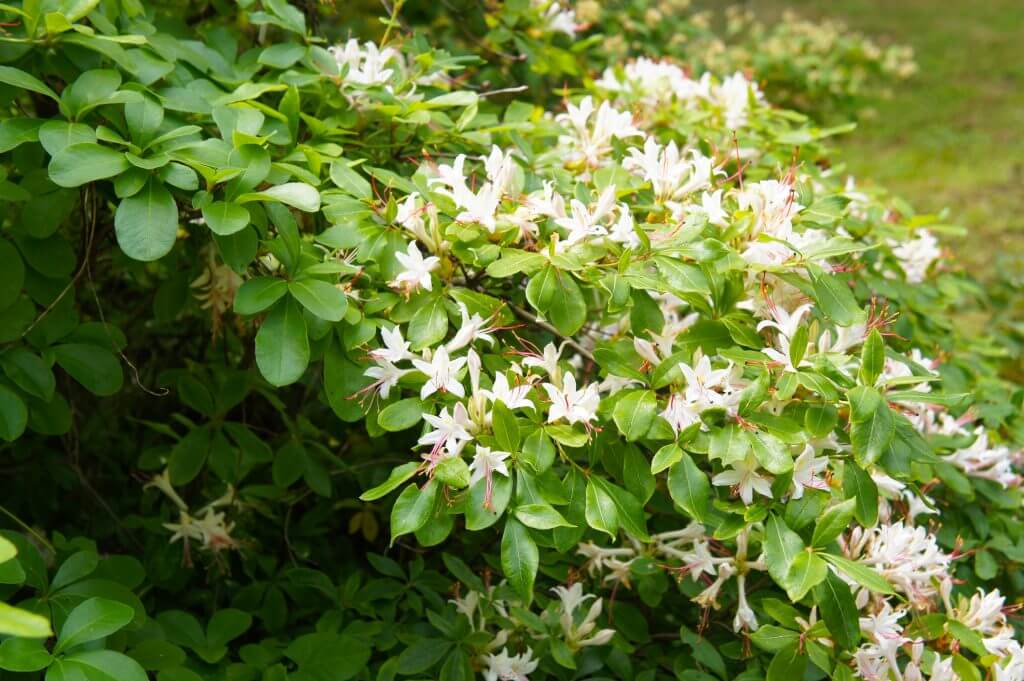

Rhododendron viscosum
Also known as catch-fly azalea, swamp azalea, or clammy azalea.
This azalea grows in coastal areas, but can also be found inland in higher elevations.
The leaves of the swamp azalea vary greatly from blue-green to dull grey-green, with shapes from round and large to small and narrow.
It can be confused with r. aborescens but could be distinguished through its stem texture, with the clammy azalea having hairy and slimmer stems, in contrast with the r. aborescens’ smooth stems.
The fragrant flowers of the catch-fly azalea are usually white and bloom in spring.
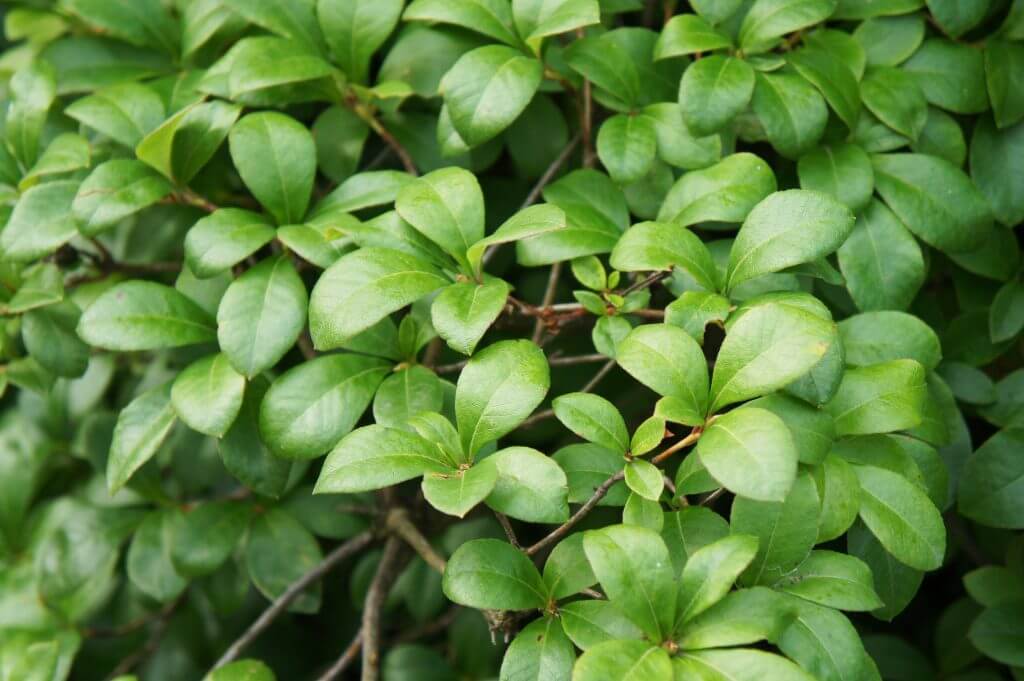

Rhododendron prunifolium
Also known as plumleaf azalea.
This azalea only grows in certain parts of the United States, particularly in Alabama and Georgia.
The plumleaf azalea blooms in summer, and the flowers are either red, orange or pink.
It can grow up to around 20 feet (6 metres) tall, and sometimes even higher.
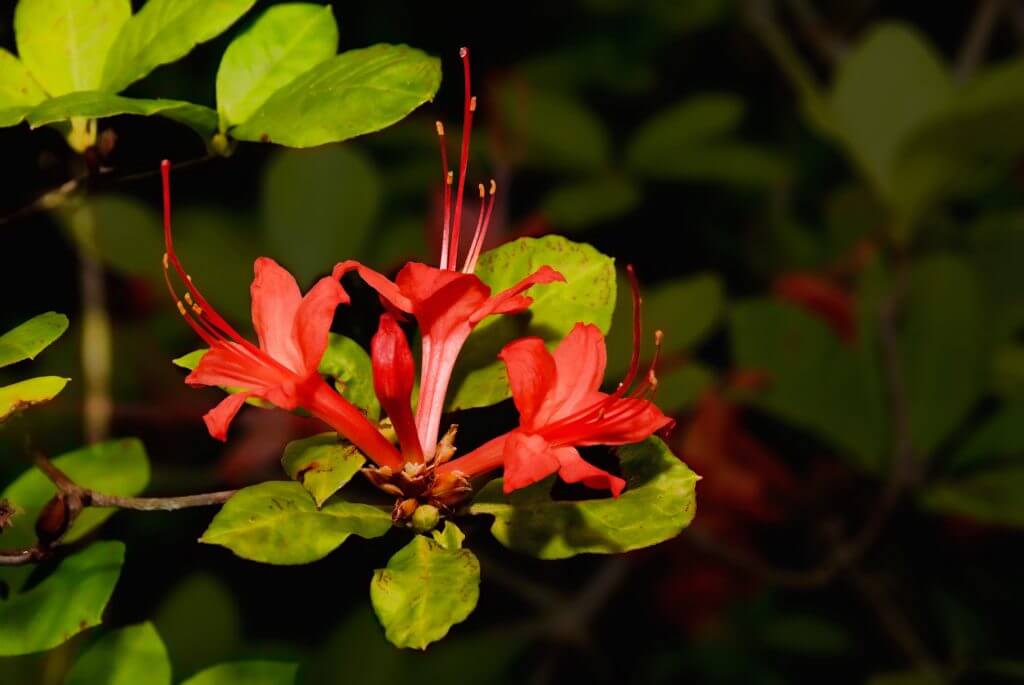

Rhododendron luteum
Also known as honeysuckle azalea or yellow azalea.
This shrub is native to southwest Asia and southeastern Europe and can grow to about 9.8 to 13 feet (3 to 4 metres) tall.
Its deciduous leaves are about 2 to 4 inches (5 to 10 cm) long and 1 to 1.5 inches (2.5 to 4 cm) wide.
The yellow azalea got its name from its fragrant bright yellow flowers that are about 1 to 1.5 inches (2.5 to 4 cm) in diameter.
Just like most azaleas, do not let the name honeysuckle azalea fool you because it is toxic.


Planting Your Azalea
Azaleas prefer a well-draining acidic soil of about 4.5 to 6.0 pH.
Plant your azaleas in spring.
Choose a position that is cool with light shade. Too much sun can burn the azalea’s leaves, while too much shade can stunt their growth.
You can grow azaleas from seeds or cutting. If you want to behold the blooms sooner, cuttings will be a better choice for planting because they are slow-growing shrubs.
You can plant azaleas in the garden or containers and will do well planted with plenty of compost. If the soil is low in nitrogen, apply some fertiliser.
Mulch around the azaleas to keep them moist.
Caring for Your Azalea
Keep your azalea in moist but well-draining soil. Water at the base. Overhead watering your azalea may promote disease.
Mulch around the plant, about 2 to 3 inches (5 to 8 cm) to help retain the moisture on its shallow roots.
Feed them with liquid fertiliser during the growing season in spring and summer, sometimes even to early autumn.
Prune your azaleas after flowering to encourage more growth in the next growing season.
Common Problems with Azaleas
Azaleas have low nutrient requirements but will show signs of nutrient deficiency through stunted growth and smaller yellowish leaves. Its leaves may also drop too early.
Azaleas may be easy to care for, but they tend to be prone to pests and diseases.
In wet winters, your azalea’s flowers may become brown and mushy, a sign of the azalea petal blight. Remove and carefully dispose of the infected flowers and spray your azalea with fungicide.
There is the azalea lace bug which attaches to the leaves and sucks the sap out of the plant. You will notice silvery mottled leaves when there is an infestation of this bug.
Spray insecticide in the early spring, during the start of the azalea’s growing season. Prune all damaged and infested branches.
[elementor-template id=”4604″]
[elementor-template id=”6387″]
